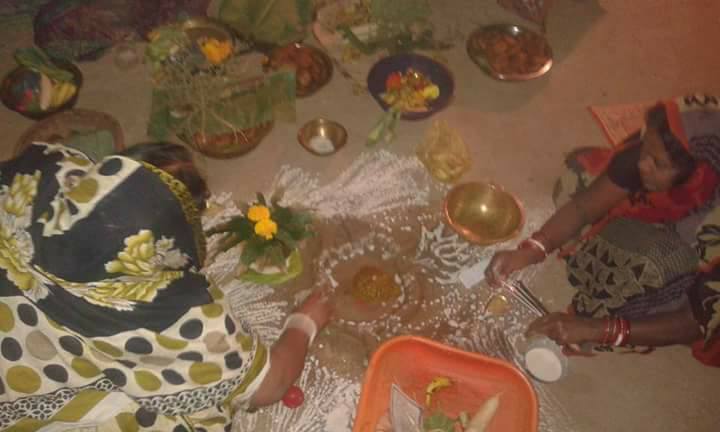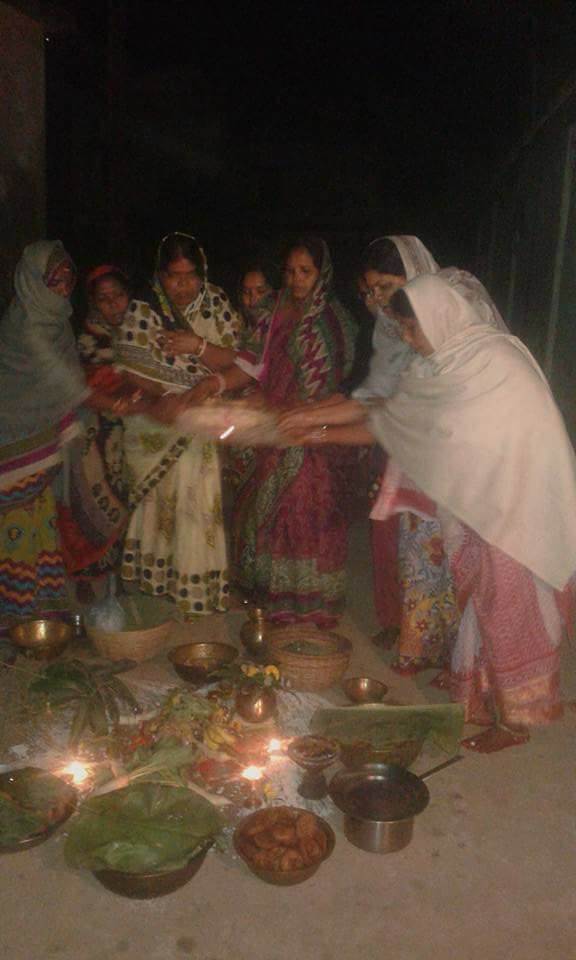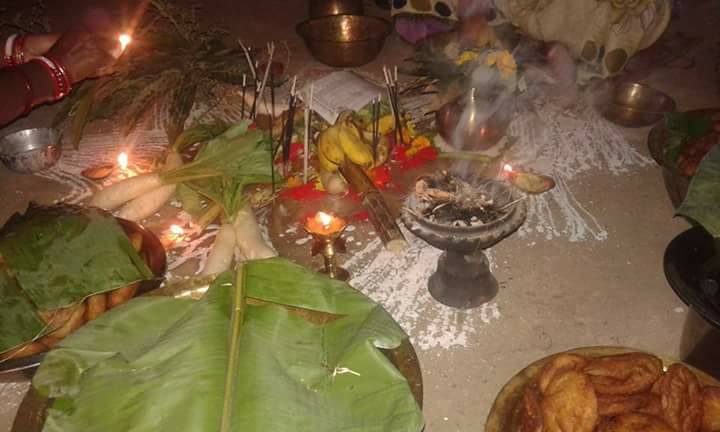Introduction
Bata Osha In Odisha In the culturally diverse state of Odisha, located on the eastern coast of India, festivals and religious observances are an integral part of people’s lives. These occasions not only uphold age-old traditions but also provide individuals with an opportunity to express their devotion and seek blessings. One such significant ritual observed in Odisha is Bata Osha, a fasting ritual dedicated to Goddess Manasa. This sacred practice holds immense spiritual and cultural importance for the people of Odisha.
Bata Osha is primarily observed by married women, although unmarried girls and men also participate in this ritual. It is celebrated on the full moon day or Purnima of the Hindu month of Margashirsha (November-December). The main deity worshipped during Bata Osha is Goddess Manasa, considered the goddess of serpents and the protector against snakebites.

The origin of Bata Osha can be traced back to ancient folklore and mythology. According to popular belief, a young girl named Lalita was bitten by a venomous snake while she was gathering flowers in a garden. Miraculously, she survived the snakebite due to her unwavering devotion to Goddess Manasa. In gratitude, Lalita introduced the practice of Bata Osha to protect others from snakebites and seek the blessings of the goddess.
On the day of Bata Osha, devotees observe a strict fast from sunrise to sunset. They abstain from consuming food and water throughout the day as a mark of their devotion and penance. Married women, known as “Bata Borani,” wear new clothes and tie sacred threads or “Bata” made of cotton on their right wrists. Unmarried girls also participate in the ritual, wearing new clothes and tying yellow threads known as “Sankha” on their wrists.
During the fasting period, devotees engage in various rituals and prayers dedicated to Goddess Manasa. They gather in groups and sing devotional songs, known as “Bauli,” praising the goddess and seeking her blessings. The atmosphere is filled with fervent devotion and spiritual energy as the devotees immerse themselves in the worship of Goddess Manasa.
A central aspect of Bata Osha is the creation of a sacred space or “mandapa” dedicated to the goddess. Women decorate this mandapa with colorful rangolis (traditional art made with colored powders), flowers, and leaves. They place a clay pot symbolizing the snake’s nest and offer fruits, betel leaves, vermilion, turmeric, and other auspicious items as a sign of reverence.
You can read our another post on Architecture of Odisha

The significance of Bata Osha extends beyond the religious aspect. It serves as a means of promoting harmony between humans and snakes, which are considered sacred creatures in many Indian traditions. By observing this ritual, people express their respect for nature and the ecosystem, fostering an ecological balance.
Bata Osha also plays a vital role in strengthening familial bonds and community spirit. Families come together to participate in the rituals, share meals, and exchange gifts. There is a sense of joy and unity as individuals collectively celebrate the divine grace and protection bestowed by Goddess Manasa.
In a broader cultural context, Bata Osha showcases the unique heritage of Odisha. The ritual reflects the blend of mythology, folklore, and spirituality that permeates the state’s traditions. It acts as a reminder of the deep-rooted faith and cultural richness that has been passed down through generations.
More: Wanted to download Odishashop.com visit here

Write A FAq For Bata Osha In Odisha
What is Bata Osha in Odisha?
Bata Osha is a popular religious festival celebrated in Odisha, India. It is dedicated to the Hindu goddess of snakes, Manasa Devi.
When is Bata Osha celebrated?
Bata Osha is observed on the sixth day of the lunar month of Bhadraba, which usually falls in August or September.
What is the significance of Bata Osha?
Bata Osha is primarily observed to protect the family members from snakebites and to seek blessings for the well-being of the family. It is also believed to bring prosperity and good harvest.
How is Bata Osha celebrated?
During Bata Osha, women in the house worship a pitcher (Bata) made of bamboo, clay, or metal, which symbolizes the presence of the goddess Manasa Devi. The Bata is adorned with various decorative items, and offerings like fruits, flowers, and rice are made.
Are there any rituals associated with Bata Osha?
Yes, there are several rituals associated with Bata Osha. Women fast on this day and engage in prayers and hymns dedicated to Manasa Devi. They also perform aarti (a religious ritual of waving lit lamps) in front of the Bata.
Can men also participate in Bata Osha?
While Bata Osha is primarily observed by women, men can also participate and offer prayers to Manasa Devi. However, fasting is usually practiced only by women.
Are there any restrictions during Bata Osha?
During Bata Osha, people abstain from consuming sour and bitter food items. They also avoid the usage of oil and salt in their food preparations.
Are there any specific customs followed after the Bata Osha ceremony?
After the Bata Osha ceremony, women break their fast by consuming a special rice-based dish known as “Habisha”. Family members and neighbors join in the celebration and feast together.
Are there any specific temples dedicated to Manasa Devi in Odisha?
Yes, there are several temples dedicated to Manasa Devi in Odisha, the most famous being the Sri Manasa Devi Temple in Sambalpur and the Manikeshwari Temple in Bhawanipatna.
Is Bata Osha a public holiday in Odisha?
No, Bata Osha is not a public holiday in Odisha. However, it is celebrated with great devotion by the people of the state, especially in rural areas.
Conclusion
In conclusion, Bata Osha is a sacred fasting ritual observed with reverence and devotion in Odisha. It symbolizes the veneration of Goddess Manasa and seeks her blessings for protection and well-being. The ritual not only strengthens the bond between individuals and their faith but also upholds the rich cultural heritage of Odisha. By participating in Bata Osha, devotees embark on a spiritual journey of self-discipline, gratitude, and seeking divine grace.
